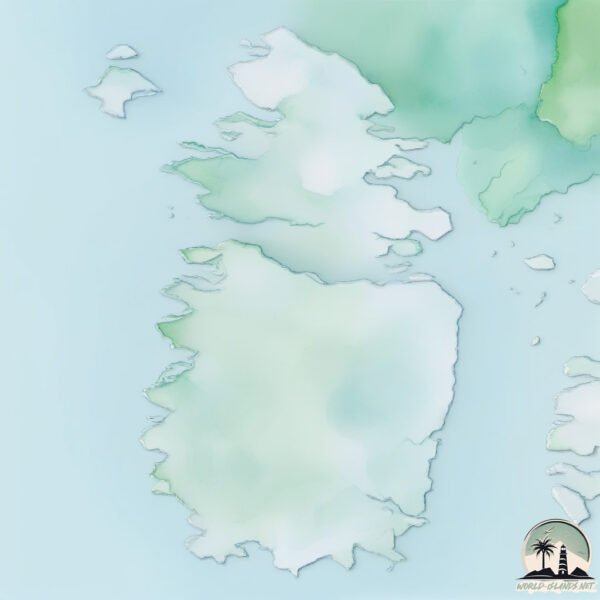Karmoya

Welcome to Karmoya, a Temperate island in the North Sea, part of the majestic Atlantic Ocean. This guide offers a comprehensive overview of what makes Karmoya unique – from its geography and climate to its population, infrastructure, and beyond. Dive into the details:
- Geography and Size: Explore the island’s size and location.
- Climate and Weather: Weather patterns and temperature.
- Topography and Nature: Uncover the natural wonders of the island.
- Infrastructure and Travelling: Insights on reaching, staying, and making the most of your visit.
- News and Headlines: Latest News.
Geography and size of Karmoya
Size: 183.8 km²
Coastline: 169.3 km
Ocean: Atlantic Ocean
Sea: North Sea
Continent: Europe
Karmoya is a Large Island spanning 184 km² with a coastline of 169 km.
Archipel: –
Tectonic Plate: Eurasia – One of the world’s largest tectonic plates, the Eurasian Plate covers a significant portion of Europe and Asia. It’s characterized by diverse geological features, including the Ural Mountains, the European Plain, and the Himalayas formed from its collision with the Indian Plate.
The geographic heart of the island is pinpointed at these coordinates:
Latitude: 59.2597893 / Longitude: 5.2513643
Climate and weather of Karmoya
Climate Zone: Temperate
Climate Details: Temperate Oceanic Climate
Temperature: Warm Summer
Climate Characteristics: Known for its moderate year-round temperatures with ample rainfall and no dry season. Warm summers are characteristic.
Topography and nature of Karmoya
Timezone: UTC+01:00
Timezone places: Europe/Paris
Max. Elevation: 85 m
Mean Elevation: 35 m
Vegetation: Evergreen Needleleaf Forest
Tree Coverage: 45%
The mean elevation is 35 m. The highest elevation on the island reaches approximately 85 meters above sea level. The island is characterized by Plains: Flat, low-lying lands characterized by a maximum elevation of up to 200 meters. On islands, plains are typically coastal lowlands or central flat areas.
Dominating Vegetation: Evergreen Needleleaf Forest
Dominated by evergreen coniferous trees such as pines and firs, which retain their needle-like leaves throughout the year. These forests are often found in cooler climates. Karmoya has a tree cover of 45 %.
Vegetation: 13 vegetation zones – Exceptionally Diverse Island
Islands with more than ten vegetation zones are among the most ecologically rich and varied in the world. These islands are akin to miniature continents, boasting an incredible array of ecosystems. The sheer range of habitats, from high peaks to deep valleys, rainforests to deserts, creates a mosaic of life that is unparalleled. They are crucial for conservation and ecological studies.
Infrastructure and Travelling to Karmoya
Does the island have a public airport? yes.
Karmoya has a public and scheduled airport. The following airports are located on this island: Haugesund Airport, Karmøy.
Does the island have a major port? yes.
Karmoya is home to a major port. The following ports are situated on the island: AKRAHAMN, SKUDENESHAVN.
The mean population of Karmoya is 179 per km². Karmoya is Moderately Inhabited. The island belongs to Norway.
Continuing your journey, Vestre Bokn is the next notable island, situated merely km away.
On the island of Karmøy Attunement for the passage to Skagen



Norway is classified as Developed region: nonG7: Developed economies outside of the Group of Seven, characterized by high income and advanced economic structures. The level of income is High income: OECD.
News – Latest Updates and Headlines from Karmoya
Stay informed with the most recent news and important headlines from Karmoya. Here’s a roundup of the latest developments.
Please note: The data used here has been primarily extracted from satellite readings. Deviations from exact values may occur, particularly regarding the height of elevations and population density. Land area and coastline measurements refer to average values at mean high tide.
